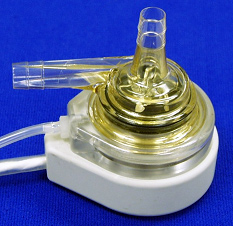 The TandemHeart™ Percutaneous Ventricular Assist Device (pVAD) differs from other assist devices in that it can be inserted either by cardiovascular surgeons in the operating room or by cardiologists in the cardiac catheterization laboratory. The TandemHeart has been used in postcardiotomy cardiogenic shock patients (those who have developed heart failure as a result of heart surgery or a heart attack) and as a bridge to a definitive therapy. The TandemHeart pVAD provides short-term support from a few hours up to 14 days, giving the heart time to strengthen and potentially regain native function.
The TandemHeart™ Percutaneous Ventricular Assist Device (pVAD) differs from other assist devices in that it can be inserted either by cardiovascular surgeons in the operating room or by cardiologists in the cardiac catheterization laboratory. The TandemHeart has been used in postcardiotomy cardiogenic shock patients (those who have developed heart failure as a result of heart surgery or a heart attack) and as a bridge to a definitive therapy. The TandemHeart pVAD provides short-term support from a few hours up to 14 days, giving the heart time to strengthen and potentially regain native function.
 |
TandemHeart™ pVAD illustration courtesy CardiacAssist, Inc.
|
The Pump
The TandemHeart pVAD is a continuous-flow centrifugal assist device placed outside the body (extracorporeally). Cannulas are inserted percutaneously through the femoral vein and advanced across the intraatrial septum into the left atrium. The pump withdraws oxygenated blood from the left atrium, propels it by a magnetically driven, six-bladed impeller through the outflow port, and returns it to one or both femoral arteries via arterial cannulas. The pump weighs 8 ounces and is capable of delivering blood flow up to 5.0 liters per minute.
The pump also has a proprietary fluid-infusion system that provides cooling and lubrication to the impeller and enhances thromboresistance. The system provides localized anticoagulation to the blood inside the pump, reducing the need for systemic anticoagulation.
The Console
The TandemHeart pVAD is operated by a controller console designed to continuously monitor the system. The console also has extensive back-up and fault-management features.
See also on this site:
Read the related article in Heart Watch Spring 2007. (PDF)



